Program Review: Digital Composing and the Invention of a Program: Overcoming History and Starting Over, Part 1
Here at UNLV, we are building our professional writing program with a digital structure that integrates all aspects of teaching and learning, assessment, and program development from the very beginning. We are creating a structure that embodies our core educational and programmatic principles by digitizing and integrating all of these components:
- Program learning objectives
- Specific course outcomes, assignments, and activities
- Tools for assessment integrated into every course
- A reflective and responsive process for course design, instruction, and learning
Given the tools at our disposal, we want to make the whole process of building the program, building master courses, creating an assessment plan, and giving students tools they need to succeed as seamless and transparent as possible, thereby ensuring that the program objectives are met throughout the minor and that each student gains the tools to demonstrate mastery of those objectives.
We describe our process for developing a writing program as a rhetorical one. This is not a new idea; our discipline has a long history of reflecting on writing program development (Staples and Ornatowski, 1997). Even when the process is not overtly described as rhetorical, the design and administration of programs in technical communication are always characterized by struggles to balance competing interests, institutional vulnerabilities, and outreach to local stakeholders (Savage and Hunt, 2003): rhetorical processes of audience analysis, identifying the best available means of persuasion, and constructing ethos. Because we are constructing a very young program in this digital age, we have the advantage of using new models of digital invention and composition. According to Walker, et al. (2011), digital composing is characterized by these features:
- Hybridity
- Emphasis on the visual
- Connections/connectivity
- Multimodality, using a variety of tools
In this Program Review, we will offer a brief history of our program to provide context, define our three core principles for writing program development and show how those principles shape our process of digital invention, and describe how our program objectives and curriculum are developed in sustainable ways. In Part II, we will explain our comprehensive, long-term assessment practices and why professional development for teachers is a primary component of our program design.
A Brief History
We have been “in the process of developing” a new major or minor in Professional Writing since 2003. Our professional writing program started out life as a certificate, in part because it was easier to get a certificate through the bureaucratic process than an entire degree program. Initially, the certificate had a simple set of goals and used a very basic assessment tool: students submitted portfolios, and faculty used a three-item evaluation sheet: design and navigation, completeness, and contents. We did not collect data, and the criteria only loosely reflected course content or the certificate’s goals.
This lax approach happened in part because the people who originated the certificate were not around after 2004. Substantial turnover in faculty and faculty shortages meant that, for a while, some of the upper-division professional writing courses were staffed by part-time instructors, which further meant from the start that the program’s goals were divorced from course outcomes, none of which were accurately reflected in the assessment tools. Moreover, any digital records of certificate activities took the form of Word documents sitting in folders on desktops scattered around different offices in the English Department.
Starting in 2005, we began making attempts to get a new professional writing major approved. We wrote documents synthesizing typical curricula from a selection of BA programs (2005), wrote and re-wrote goals and objectives for our proposed degrees, and submitted proposals for a new major (2006, again in 2008, yet again in 2009). Suddenly, because of new federal reporting requirements for certificate programs, UNLV’s administration unilaterally decided to abolish all certificates and, where suitable, transform them into minors or majors. So, after various starts and stops, rejections and resubmissions, we “succeeded” in 2012. With the minor approved and a majority of the courses in the catalog, our approach to program building became, essentially, composing our program digitally, through course websites, course management systems, and any digital media we could use, borrow, or repurpose to suit our needs.
During the years from 2003 to 2012, the professional writing faculty had been developing expertise with distance education courses, not only for professional writing certificate courses, but also through administering our single-course, multi-section business writing program, which serves up to 1800 students a year, and is largely staffed by part-time instructors with little training in the discipline. Using tools like WebCT’s master template to help administer this program, we created support structures to help our part-time instructors and ensure every student received a consistent experience (Nagelhout and Tillery, 2013). However, until the new minor was approved, we did not think about using digital tools to help us build a multi-course program that integrates curriculum, outcomes, assessment, and administration. Now, as we invent our program, we hope to create a comprehensive digital framework that will be robust enough to survive the comings and goings of any one individual, but flexible enough to adapt to any future circumstance.
From Word Processing to Fully Digital Context
Typically, developing an academic program requires us to write in many genres: program and course proposals using forms provided by our institutions, mission statements for the program, year-end reports, and reflections. We use the language and genres of assessment technologies to develop goals and assessment tools, and (often after the fact) we publicize our program with the typical, static academic website. Then, as we develop and teach classes, we create our own course websites or use the course management system, and, finally, when our students are ready to graduate, they might create a digital portfolio using a campus or external server.
This range of documents are rarely connected, and we typically move through the process in a certain order:
- Program development
- Degree objectives and goals
- Course proposals
- Program website
- Individual course websites or CMS
- Assessment tools
- Assessment reports
Each of these steps requires its own genre, tools, and technologies. Of course, genres can be integrated, and, whenever possible, digitized.
But in the past, we hadn’t been thinking digitally during our program development process. Now, we are composing our program primarily using digital tools, and creating a coordinated digital infrastructure that draws together all these disparate elements. While we have gathered most of the old documents from our previous attempts, the digital composing of our Professional Writing Minor begins with our degree program’s objectives at the center and moves out from there. In other words, rather than an ordered and chronological progression for program development based on a course structure, our digital composing grows organically and blurs the arbitrary barriers between traditional program components:
- Program Objectives
- Program Courses (with Outcomes)
- Course Projects
- Project Criteria/Rubrics
- Learning Interactives and Learning Analytics
Three Core Principles for Writing Program Development
To begin, we want to anchor our program development briefly in terms of three core principles — 10-Hours-per-Week; Coherence/Consistency; Learning for All Means Learning for One — and show how we compose digitally to develop program tools and components in accordance with these principles.
Our first principle is 10-Hours per Week, which means, in short, that a trained teacher should never be expected to spend more than TEN hours per week on any one section. This includes time in class, time in office hours, time preparing for class, time responding to and evaluating student writing, and time in professional development. Likewise, students are expected to spend 10 hours per week working on each course that we offer. Ideally, program administrators should be held to this same standard. The key, for us and for our program, is that we establish a baseline for the workload and working conditions, then develop online and digital support materials necessary to uphold those standards throughout the program.
Our second principle, Coherence and Consistency, simply means that every student in every section of a course will have basically the same experience. They will be expected to meet the same outcomes, begin with the same primary sources and materials, perform the same set of tasks and activities, and be held to the same standards for evaluation. We can’t effectively, or accurately, assess a program each semester and over time without establishing a coherent approach and a consistent delivery, whether it’s a single course with multiple sections or a multi-course, multi-section program like our Professional Writing Minor. Keep in mind, this is not lock-step, this does not diminish creativity; instead, this tells students and teachers that everyone will be treated fairly and equitably.
Finally, our third principle is Learning for All Means Learning for One. Our program has a common set of objectives, and each of our courses have a common set of outcomes. In this way, we establish certain standards and expectations for learning success. These are general applications, learning for all; however, inextricably linked to the idea of learning for all must be pathways for students to learn for their own reasons, for their own purposes. Our courses, and the projects embedded in those courses, are not a set of facts and figures that students regurgitate on an exam; instead, our courses ask students to explain “why” or “how” something works. In other words, we don’t teach them a particular software application, we teach them how to learn software (or, rather, we ask them to explain to the class how they learn software) and then reflect on this learning experience. More importantly, this principle extends to our goals for teacher support and our commitment to collaborative administration. All stakeholders must be provided opportunities to learn as much as they want to learn and provided with tools for learning that they can use for the rest of their lives.
In the invention stage of our process of digitally composing our program, we find that each of these principles connects with and supports the others. The 10-hours-per-week principle guides our course development efforts, for example. As we review and update our curricula, we work as a team to create flexible sets of assignments to each course, complete with readings, instructional materials, grading criteria, and evaluation sheets for students, and any supplemental instructional materials for instructors. All these materials are accessible to all faculty on the shared drive or in the course template. With an extensive set of teaching materials for each course, created and revised collaboratively across several semesters, each individual instructor finds that class preparation time is greatly decreased throughout the semester. In addition, we meet our second goal of consistency for all students across semesters and courses. And finally, each course, and each assignment, can contain multiple pathways for each student, particularly as we never regard any class as a final product. Every semester, we review courses and assignments and revise based on our students’ experiences. While all these activities (described below and in Part II) may seem time-consuming, we have found through experience that time spent planning, developing, and revising our courses as a team more than pays off in a reasonable workload during the semester.
Building Out from Our Program Objectives: Program Objectives and Curricula Sustainability
To begin, the Professional Writing Minor acknowledges that “writing” is no longer limited to the individual simply placing words on a page, but, instead, encompasses all manner of digital production and delivery. As such, we have established seven program objectives that students will demonstrate upon completion of the program:
- Demonstrate proficiency in designing, writing, and editing print and digital texts for a variety of audiences and purposes in professional contexts
- Demonstrate project management skills
- Exhibit a deftness with common professional writing genres
- Exhibit an ability to collaborate effectively at all stages of a writing project
- Exhibit visual design awareness and acuity
- Apply a broad repertoire of research and critical-thinking skills that reflect an awareness of cultural contexts
- Develop strategies for learning digital/software applications and acquiring expertise
Our Program Objectives are broadly conceived, designed to span the program; in other words, no one course or project or activity should “meet” a single objective. Moreover, we consider each of these objectives as developmental and ongoing.
From this starting point, we move out through digital tools, including course websites and the CMS, where we can integrate objectives into each course, thereby already constructing in a web environment. We have six core courses (of which students must take four) that we will offer on a rotating basis each year:
- ENG 400 – Document Design
- ENG 405A – Professional Editing
- ENG 406B – Electronic Documents and Publications
- ENG 407C – Advanced Professional Communication
- ENG 409A – Visual Rhetoric
- ENG 40X – Writing in Multimedia
We also have a set of general electives (of which students must take three):
- ENG 401A – Advanced Composition
- ENG 409B – Rhetoric and the Environment
- ENG 411B – Principles of Modern Grammar
- ENG 414A – History of the English Language
In building out from our program objectives, we are revising each course as a master course, using the Master Template feature in BlackBoard Learn to create a modular strategy that articulates 1) our need to ensure that the course goals and outcomes of every section in our multi-course, multi-section program interact consistently with our program objectives; 2) our commitment to delivering both online and hybrid courses that support anywhere/anytime learning; and 3) our desire to leverage digital technologies to increase learner control, learner choice, and learner independence. Our priorities, then, as we revise the courses, are to construct transparent and seamless projects, activities, and tools that explicitly align course outcomes with program objectives. While certain courses may be more conducive to certain objectives (Document Design for Visual Design Awareness, for example), our modular strategy ensures that each course will contribute in observable, and assessable, ways to a student’s overall ability to accomplish each program objective.
Our overarching assumption, one that carries through all our principles and practices for curricular and program design, is that no one individual should be the center of the program. Although we are a small faculty (only three in professional writing), we are doing our best to avoid “lone wolf” program design, or what we call the “Louis XIV” model of administration. Louis XIV of France, the “Sun King,” was famously supposed to have said “l’etat, c’est moi” (“I am the state!”), an identification between individual ruler and state that is common both in European monarchies and in “lone wolf” writing programs. An important feature of digital composing is its hybrid, collaborative nature, and we are taking advantage of this feature to avoid personal, individual ownership of any element of our program, from a single course all the way up to program administration. Although we are in a department that collects and allocates administrative power to individuals, and is opposed to collaborative administration, we subvert that tendency wherever possible. With a deep commitment to collaborative teaching, research, and administration, we hope to lead by example and show that a digital, hybrid model offers great possibilities for the future of the digital university.
Works Cited
- Kynell-Hunt, Teresa, and Gerald Savage, eds. Power and Legitimacy in Technical Communication: The Historical and Contemporary Struggle for Professional Status. Amityville, NY: Baywood, 2003. Print.
- Staples, Katherine, and Cezar Ornatowski, eds. Foundations for Teaching Technical Communication: Theory, Practice, and Program Design. Greenwich, CT: Ablex 1997. Print.
- Tillery, Denise, and Ed Nagelhout. “Theoretically Grounded, Practically Enacted, and Well Behind the Cutting Edge: Writing Course Development within the Constraints of a Campus-Wide Course Management System.” Online Education 2.0: Evolving, Adapting, and Reinventing Online Technical Communication. Ed. Kelli Cargile Cook and Keith Grant Davie. Amityville, NY: Baywood, 2013. 25-44. Print.
- Walker, Janice R., Kristine L. Blair, Douglas Eyman, Bill Hart-Davidson, Mike McLeod, Jeff Grabill, Fred Kemp, Mike Palmquist, James P. Purdy, Madeleine Sorapure, Christine Tulley, and Victor J. Vitanza. “Computers and Composition 20/20: A Conversation Piece, or What Some Very Smart People Have to Say about the Future.” Computers and Composition 28 (2011): 327–346. Print.

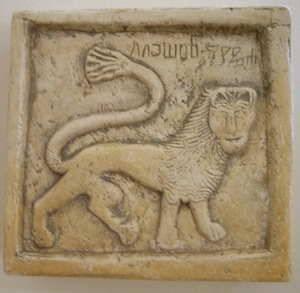
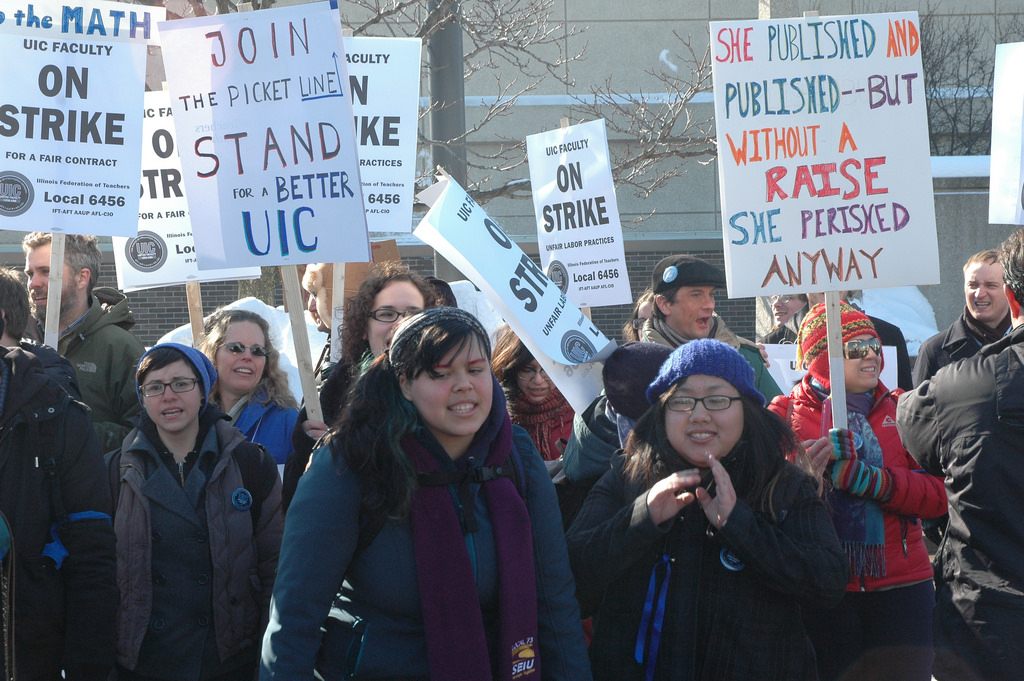
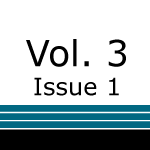
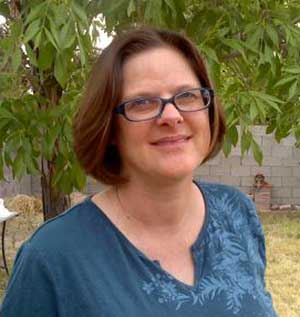 Denise Tillery is an associate professor at the University of Nevada, Las Vegas, where she teaches courses in professional writing and rhetoric. She has published 13 peer-reviewed articles and book chapters on environmental rhetoric, gender and scientific discourse, and program administration. Her current research projects focus on scientific evidence in environmental rhetoric, and program administration in contexts of austerity.
Denise Tillery is an associate professor at the University of Nevada, Las Vegas, where she teaches courses in professional writing and rhetoric. She has published 13 peer-reviewed articles and book chapters on environmental rhetoric, gender and scientific discourse, and program administration. Her current research projects focus on scientific evidence in environmental rhetoric, and program administration in contexts of austerity. 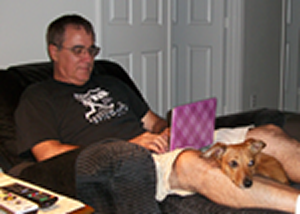 Ed Nagelhout works at the University of Nevada, Las Vegas, where he teaches courses in professional writing and language studies. He has edited two collections, published twenty articles or book chapters, and presented more than eighty papers on such topics as writing program administration, WAC/WID, and teaching in digital environments. His current research projects examine academic program design, building and maintaining interdisciplinary research teams, and the role of writing in transdisciplinary graduate education.
Ed Nagelhout works at the University of Nevada, Las Vegas, where he teaches courses in professional writing and language studies. He has edited two collections, published twenty articles or book chapters, and presented more than eighty papers on such topics as writing program administration, WAC/WID, and teaching in digital environments. His current research projects examine academic program design, building and maintaining interdisciplinary research teams, and the role of writing in transdisciplinary graduate education.